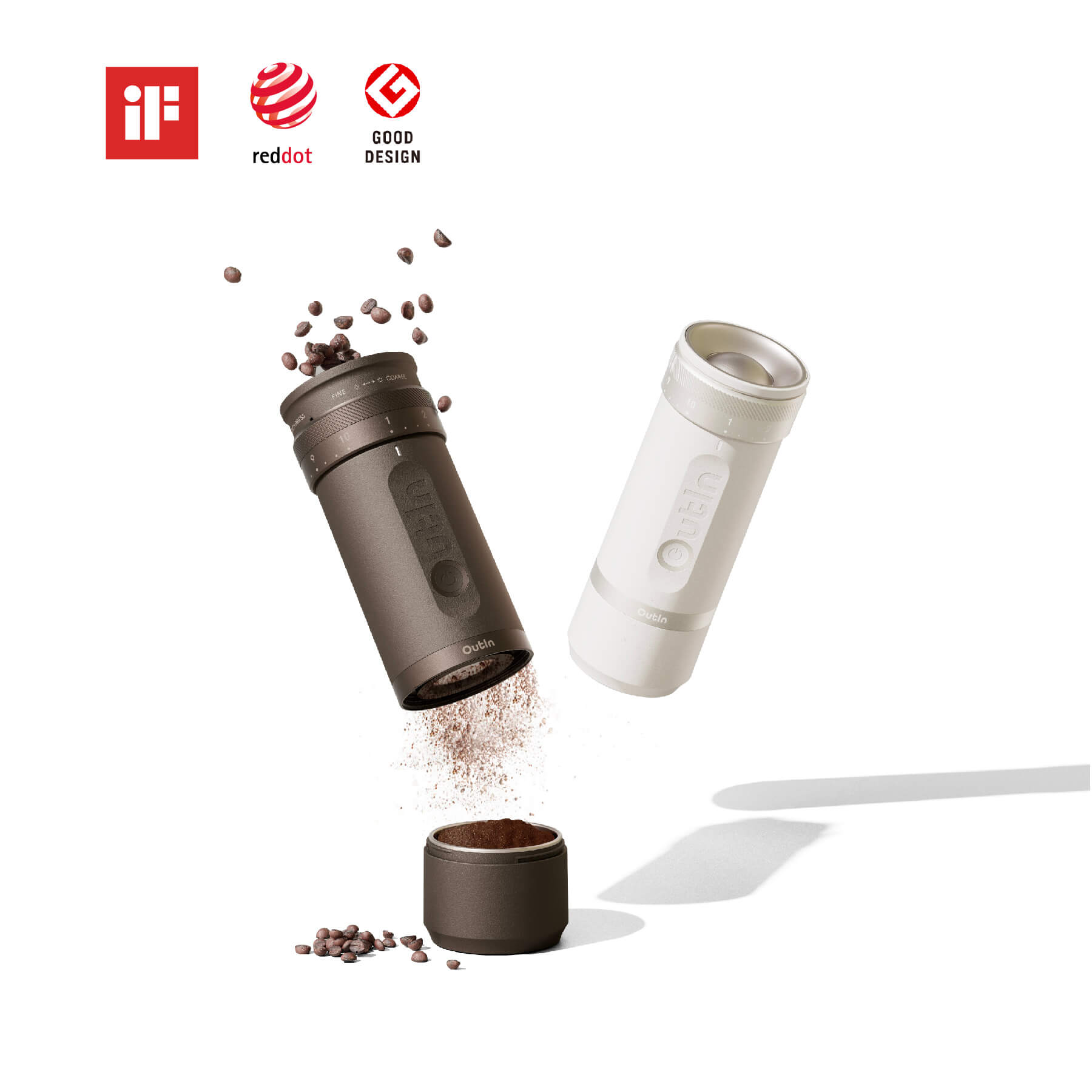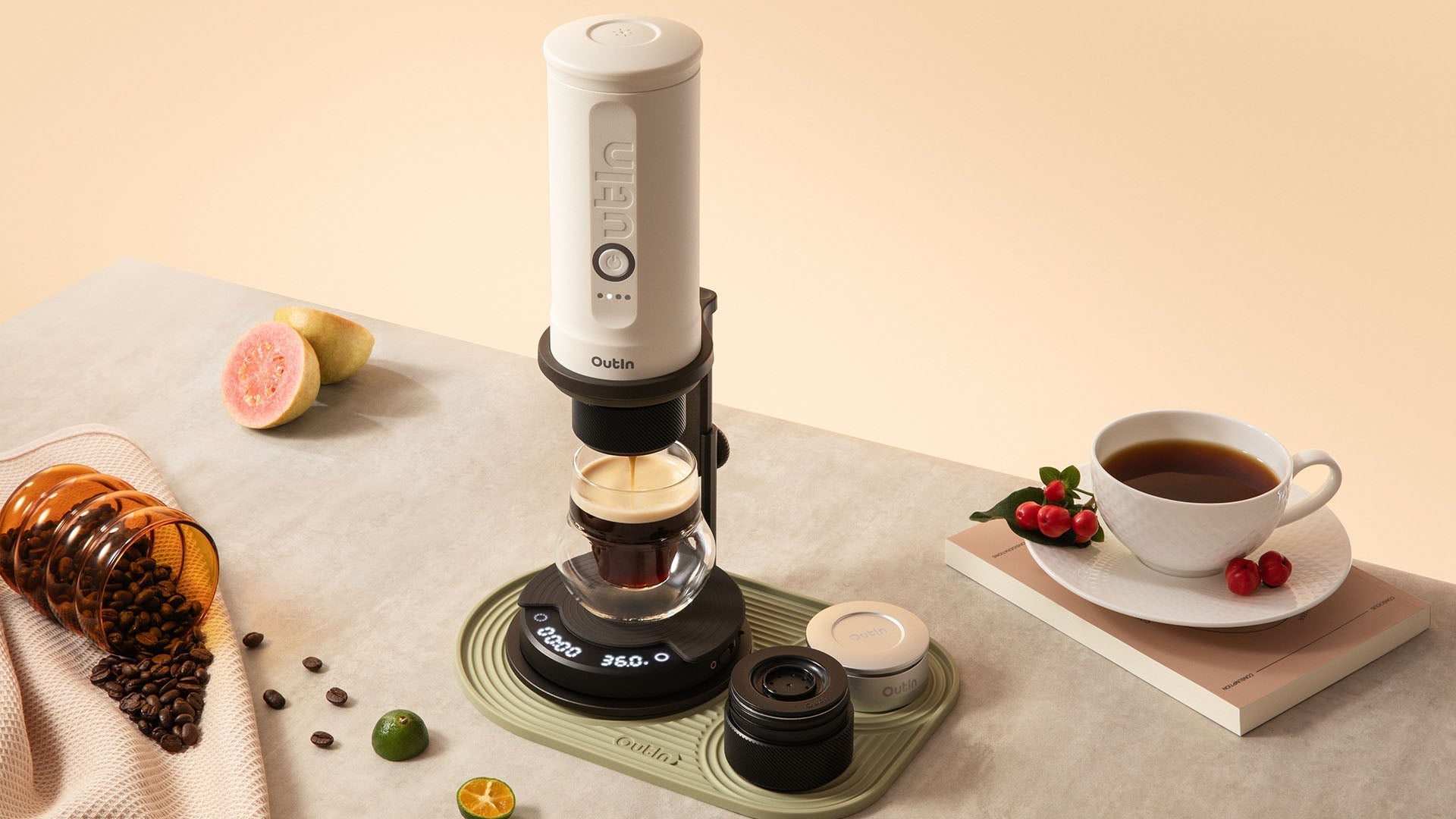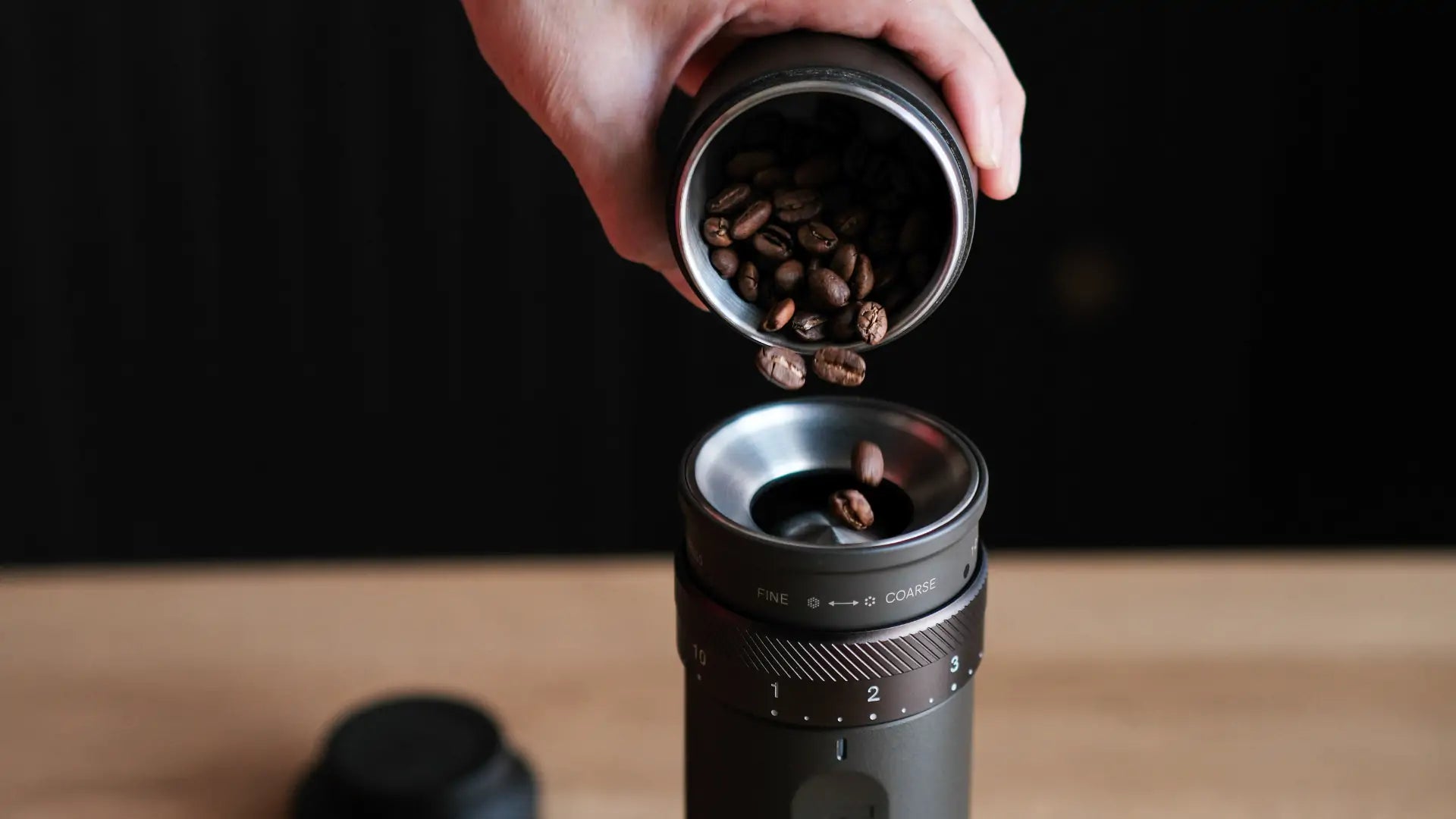The ideal amount of coffee in your grinder to begin your day on the right foot. Too small an amount of coffee and you'll end up with weak, flavorless coffee. Too much and you'll be grimacing at a bitter, overpowering cup. Whether you're using a kitchen scale or simply counting scoops, this guide will take you through the basics of coffee-to-water ratios for several brew methods. With a few simple adjustments to your taste, you'll be making flawless coffee each time without the trial and error.
OutIn Fino Portable Electric Coffee Grinder
Coffee-to-Water Ratio: The Foundation of Great Coffee
The relationship between coffee grounds and water is quite crucial to the brewing process. This ratio not only impacts the concentration of your coffee but also its overall flavor profile, body, and balance. To have this ratio right is oftentimes the difference between a bad cup and a good one.
How Ratio Affects Flavor
When you brew coffee, water extracts compounds from ground coffee. The amount of coffee relative to water directly sets what you're going to have in your cup:
When You Use Too Little Coffee
Too few coffee grounds cause over-extraction. Water permeates too long through the sparse coffee, pulling out the undesirable bitter compounds after the good flavors have already been sapped out long ago. A watered-down, thin coffee with a clean, puckering bitterness that oftentimes hangs around unpleasantly behind.
When You Use Too Much Coffee
Excess coffee grounds lead to under-extraction. Water does not have sufficient contact time with each particle, extracting mostly the bright, acidic compounds and leaving the deeper, sweeter notes behind. This produces a very strong but unbalanced brew that will most likely taste harsh and intensely bitter.
The "Golden Ratio" for Better Coffee
Coffee professionals have found the optimum starting point that is appropriate to the majority of brewing processes. The balanced ratio helps get the correct extraction temperature and a pleasant taste.
What Is the Golden Ratio?
The golden ratio falls between 1:15 and 1:18 (coffee to water by weight). This means for every gram of coffee, you'll use between 15 and 18 grams of water. For example:
A 1:15 ratio: 20g coffee + 300g water = stronger brew
A 1:18 ratio: 20g coffee + 360g water = milder brew
This range gives you flexibility to adjust based on your taste preferences while staying within parameters that typically produce good results.
Measurement Methods
While weight provides the most consistent results, volume measurements work as general guidelines when a scale isn't available:
1 level tablespoon of whole beans ≈ 5-7g of coffee
1 standard coffee scoop (2 tablespoons) ≈ 10g of coffee
For everyday brewing, a simple rule is about 1-2 tablespoons of whole beans per 6-ounce cup, adjusting up or down based on how strong you prefer your coffee.

The Right Coffee Amount for Different Brewing Methods
Finding the perfect amount of coffee starts with your brewing method. Each technique extracts flavor differently, requiring specific ratios for optimal results. Your personal taste preferences and the number of cups you're making also factor into the equation.
Coffee Measurements Quick Reference
| Brewing Method | Recommended Ratio | Coffee for Typical Batch | Approximate Scoops |
| Drip Coffee Maker | 1:15 to 1:16 | 74-79g for 40 oz (1180ml) | 7-8 scoops |
| Pour Over | 1:15 to 1:17 | 18-20g for 10 oz (300ml) | 2 scoops |
| French Press | 1:12 to 1:15 | 63-79g for 32 oz (946ml) | 6-8 scoops |
| Espresso | 1:2 | 18-20g for double shot | 2 scoops |
| Cold Brew | 1:8 or stronger | 115g for 32 oz (946ml) | 12 scoops |
| Moka Pot | Fill basket | 15-18g for a 3-cup pot | 1.5-2 scoops |
Note: A standard coffee scoop is approximately 10g of whole beans or 2 tablespoons
Coffee-to-Water Ratios by Brewing Method
Different coffee makers need different amounts of coffee relative to water. Here's a breakdown of the most common methods:
Drip Coffee Makers
The standard automatic coffee maker you find in most homes works best with a ratio between 1:15 and 1:16. For a typical 8-cup pot (about 40 ounces of water), you'll need approximately 74-79 grams of coffee, or roughly 7-8 level scoops of beans before grinding.
Pour Over Methods
Manual pour-over systems like the Hario V60 or Chemex produce clean, bright flavors. These methods typically call for a ratio between 1:15 and 1:17. For a single cup (10 oz/300ml), measure out 18-20 grams of coffee—about 2 standard scoops of whole beans.
French Press
The immersion brewing of a French press extracts coffee differently, requiring a higher concentration of grounds. Use a ratio of 1:12 to 1:15. A standard 32-oz French press needs about 63-79 grams of coarsely ground coffee, which is approximately 6-8 scoops of whole beans.
Espresso
Espresso stands apart with its intense extraction method. A typical double shot uses 18-20 grams of finely ground coffee with about 36-40 grams of water (a 1:2 ratio). Single shots use roughly half these amounts.
Cold Brew
Cold brew's long steeping time requires significantly more coffee—typically a 1:8 ratio, sometimes even stronger. A quart (32 oz) batch needs about 115 grams of coffee, or approximately 12 standard scoops of beans.
Moka Pot
These stovetop brewers use their unique system. Simply fill the filter basket completely with finely ground coffee (not quite espresso fine), leveling it off without tamping. A 3-cup Moka pot typically holds about 15-18 grams of coffee.

How to Adjust Ratios for Stronger or Milder Coffee
While these ratios provide starting points, your taste preferences matter most:
For Stronger Coffee
Use ratios at the lower end of the recommended range. For instance, if a method suggests 1:15 to 1:18, opt for 1:15 or even 1:12 for a bolder cup. This means using more coffee relative to the same amount of water.
For Milder Coffee
Choose ratios at the higher end, such as 1:18 or even 1:20. This reduces the coffee concentration, resulting in a gentler flavor profile while still avoiding the sourness of under-extracted coffee.
Simple Math for Brewing Multiple Cups
When brewing for a group, precision becomes more important:
Standard Cup Measurements
Coffee culture and equipment manufacturers often disagree on what constitutes a "cup":
- Standard coffee cup: 6 fluid ounces (177 ml)
- Coffee maker "cup": Often 5 fluid ounces (148 ml)
- Actual drinking mug: Typically 8-12 fluid ounces (237-355 ml)
Always check your specific coffee maker's measurements or use a scale for accuracy.
Simple Scaling Formula
To calculate the coffee for any amount of water:
- Convert your desired water volume to grams (1 ml = 1 g)
- Divide by your preferred ratio number (15, 17, etc.)
For example, to make 4 standard cups (24 oz/710 ml) at a 1:16 ratio:
710 ÷ 16 = 44.4 grams of coffee
This straightforward approach works for any brewing method or serving size.
OutIn Fino Portable Electric Coffee Grinder
Practical Ways to Measure Coffee Beans
After determining how much coffee you need based on your brewing method, the next step is accurately measuring those beans before grinding.
Using a Coffee Scale for Best Results
A digital scale provides the most precise measurements, eliminating any variables like bean density and size. Specialty coffee scales offer 0.1-gram precision and typically come with built-in timers for brewing, but any digital scale that can be programmed for gram measurements will work for most methods. Simply place your container on the scale, zero it out with the tare function, and add beans until you reach your target weight. For a standard 10-oz pour-over cup at a ratio of 1:16, you'd remove precisely 18-19g of beans to maximize extraction.
Quick Measuring with Coffee Scoops
Where ease trumps total precision, coffee scoops are a reasonable trade-off. An average coffee scoop will contain approximately 10g of whole beans and is easy to measure hastily without sacrificing much precision. This method is particularly well-suited for brewing styles that can stand a little imprecision, such as French press or drip machines. Keep in mind that bean density also varies by roast level—darker roasts have more volume but less weight for the same measurement than lighter roasts.
The "Grind Fresh" Principle
Regardless of your measuring method, always measure your beans before grinding, and grind only what you will use immediately. This practice preserves the aromatic compounds in your whole beans that are not ground and ensures consistent dosing with every brew. Coffee will begin to lose its tiered flavors shortly after grinding due to increased exposure to oxygen from the higher surface area. By sticking to this simple routine of measuring before grinding, you'll taste noticeably fresher and save from waste and also keep your grinder free from stale residue.
Measure Your Coffee Right!
Using the correct amount of coffee for your brewing technique is the key to a consistently great cup. Start with the golden ratio (1:15 to 1:18) and adjust to your liking. Using an accurate coffee scale or convenient scoop, always measure first and grind only what you'll be using immediately. With these simple principles and the measurements guide above, you'll eliminate the guesswork and enjoy improved coffee every time.





Leave a comment
This site is protected by hCaptcha and the hCaptcha Privacy Policy and Terms of Service apply.